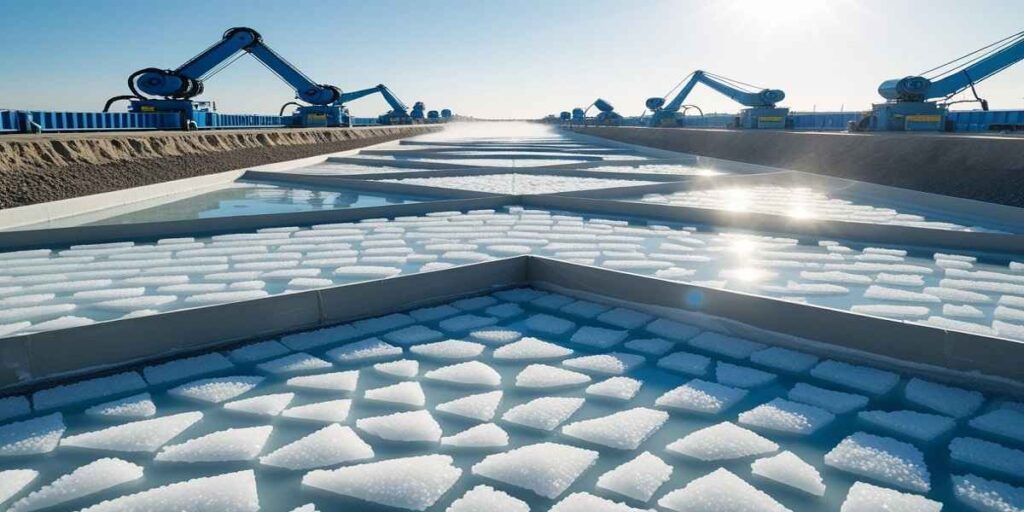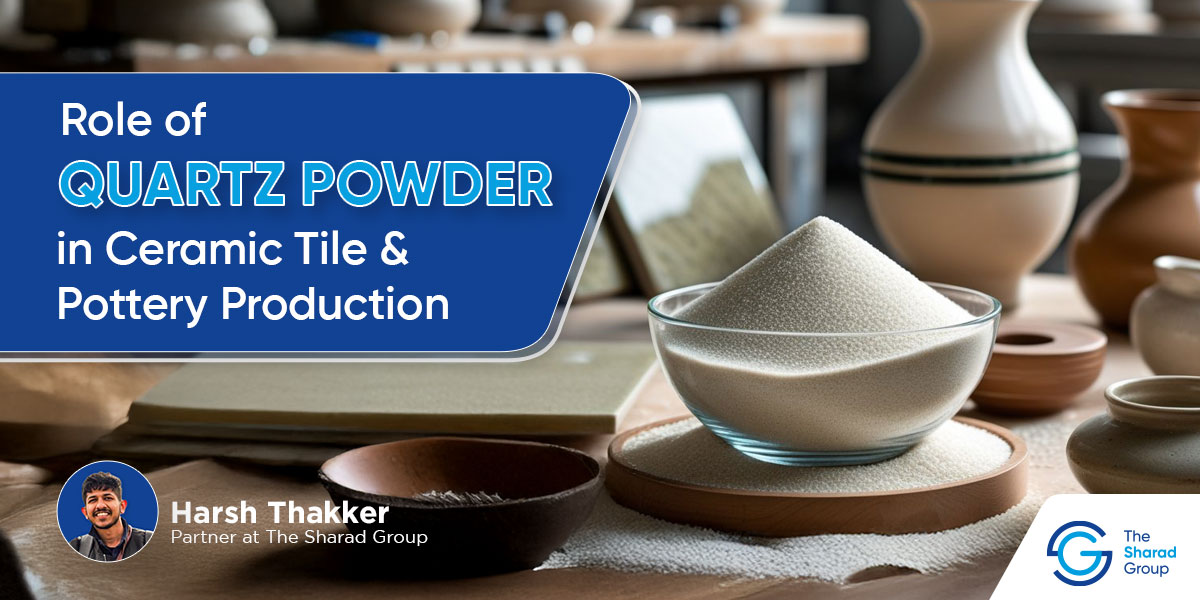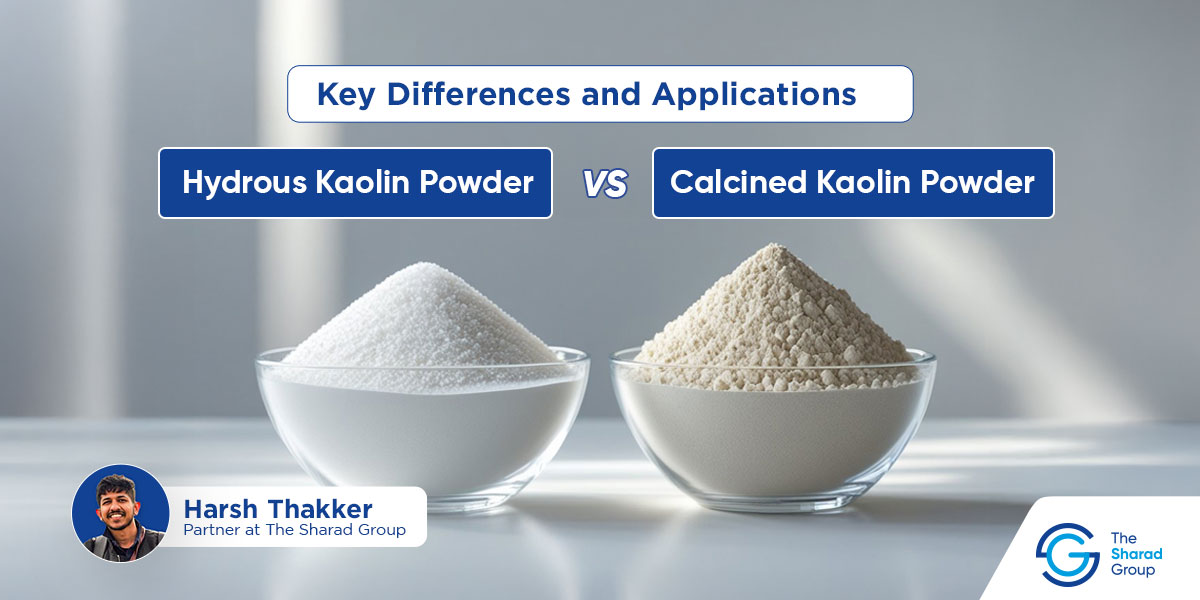If you see the ingredients list of almost any product you consume, you’ll find salt in most of them.
It’s there in snacks, toothpaste, shampoo, the leather of your car seats, and even in medicines!
Salt is a raw material that powers dozens of industries quietly and consistently.
So, its purity really matters!
Even the smallest impurities in salt can mess with the effectiveness of your product.
That’s why large-scale salt manufacturers need to follow a carefully controlled, scientific process for consistent, high-quality results.
Salt manufacturing process begins in open salt pans near India’s western coast and ends in tightly sealed packages on store shelves or in industrial facilities.
In this blog, we’ll explore how top producers follow precise salt purification methods to ensure consistent quality at every stage of the production cycle.
By the end of this blog, you’ll have a clear picture of the journey from sea to shelf!
How Salt Manufacturers Ensure Purity and Quality: Table of Contents
- What is the process of salt purification and quality control?
- Precision in every grain and trust in every batch
- How salt manufacturers ensure purity and quality: FAQs
What is the Process of Salt Purification and Quality Control?
Salt purity is essential, regardless of whether it is used in household or industrial applications. But how do salt makers actually ensure it?
Let’s walk you through the full journey of how salt is processed to make it pure and ready to use.
1. Sourcing and Initial Crystallization
The salt production journey begins at a series of interconnected ponds called fractional crystallization ponds.
- Concentration ponds: If you’ve ever seen those wide, flat ponds near coastal salt farms, you’ve already come across the birthplace of most of the salt we consume! The seawater sits out there under the sun, slowly drying up. As a result of this process, heavier minerals, like gypsum or lime, tend to sink naturally to the bottom, leaving the salt on top.
- Crystallization pond: With the transfer of ponds, and by the time it reaches this pond, the brine reaches about 25.7° C, the point at which purified sodium chloride crystallizes naturally.
This staged process removes the majority of impurities, leaving behind a fairly pure salt that can proceed to the next stages of refinement.
No machines, no chemicals. Just gravity, time, and heat doing their thing.
2. Washing and Heap Treatment

What's on this page:
ToggleThe salt still carries traces of other minerals and debris. So before anything else, it’s given a thorough wash, and this process goes as follows:
- Initial rinse in brine: It starts with a rinse, not with fresh water, but with brine. That way, the salt doesn’t dissolve while it sheds off surface mud.
- Mechanical washing: The salt is mechanically washed using machines that mix brine and water, stirring the salt. This way, it knocks loose the finer stuff still holding onto the crystals.
- Hydrocyclones or centrifugal separators: Salt manufacturers also use these devices to separate heavier particles. It works a bit like a washing machine on a spin cycle. The heavier materials are flung outward and separated.
This stage pulls away most of the leftover grit. It’s a significant improvement, although not yet the final product that we see and need. For that, the salt’s still got more refining to go!
3. Dissolution and Chemical Purification
This stage converts salt crystals into brine and then chemically purifies it.
Some minerals can’t be removed by simple washing, and that’s where manufacturers use modern salt purification methods.
- Salt dissolving: Clean crystals are put in pure water until they fully dissolve, forming a brine solution.
- Chemical addition: Then, salt manufacturers add these two chemicals:
- Adding sodium carbonate clears calcium from the brine by converting it into a solid form.
- Sodium hydroxide follows, reacting with magnesium to create a similarly removable solid.
- Settling or filtering: The compounds I mentioned above are solid substances that are insoluble in water. So, they either sink to the bottom or get caught in filters.
This treatment effectively removes the majority of calcium and magnesium.
4. Clarification and Brine Treatment
After chemical purification, the fourth stage removes the solid impurities left behind. It requires a three-step process:
- Settling in clarifiers: The brine, now mixed with solid impurities, enters a large tank, where the heavy particles naturally fall to the bottom as sludge.
- Filtering the brine: The clear brine on top is drawn out and passed through filters, such as anthracite sand beds or candle filters.
- Managing sludge: The settled solids are collected and often pressed to remove excess water.
This phase removes virtually all remaining visible impurities, tiny sediments, colored particles, or organics.
5. Vacuum Evaporation and Recrystallization
Now, it’s time to turn the brine back into salt, but this time with much higher purity. This is done using a method called vacuum evaporation.
Let me show you what it looks like:
- The purified brine is heated inside a sealed chamber where the air pressure is reduced.
- The water boils at a lower temperature, and protects the salt from overheating.
- Water is pulled out slowly under vacuum, and salt crystals begin to form.
At this point, you get soft crystals that are still slightly damp but much cleaner than raw salt.
That’s how Pure Dried Vacuum Salt comes out! It’s exactly what you need for pharmaceutical products, food manufacturing, and clean chemical production.
6. Solid-Liquid Separation
As you read above, there’s still some water hanging around in the mix.
To get that out, salt manufacturers put it into a centrifuge. Basically, a spinning drum that forces the moisture to the outside.
It’s kind of like how your clothes come out less soggy after a spin cycle.
The salt stays in, the water’s thrown out.
By the time this step is complete, the salt is no longer dripping wet. But it’s not quite dry either!
That’s where the next step comes in:
7. Drying and Crystal Conditioning
To dry the salt, manufacturers use fluidized bed dryers, a highly efficient and modern drying method trusted in several industries. Here’s what it involves:
- The bed dryer blows warm air from below, which lifts and moves the salt around, kind of like popcorn in hot oil. That way, each crystal dries on all sides.
- This technique removes water quickly and uniformly, usually drying salt down to an extent where it doesn’t form clumps.
- After drying, the crystals undergo a cooling stage to prevent condensation and sticking.
Uniform drying is also necessary to reduce moisture and prevent microbial growth in stored salt.
8. Breaking Down and Fine-Tuning
Dry salt isn’t ready just yet.
The crystals may be chunky or in the form of fine dust. That won’t work if you want uniformity, especially in packaged food.
So, it’s sorted out in three steps:
- Breaking down: Big particles of the salt are crushed by milling machines to give it the right texture for its intended use.
- Screening: The ground salt passes through mesh screens. Some particles are too fine, while others are too large. Only the ones in the middle ground make it through.
- Mixing anti-caking agent: No one wants lumpy salt. That’s why salt manufacturers add a bit of anti-caking material; silicon dioxide is a common one. And for table salt, this is the step where iodine is added to make it edible.
And that’s it: after the 8-step process we’ve discussed, the salt is ready to be packed and sent off!
9. Quality Testing and Compliance

In the salt production process, every batch goes through rigorous testing in certified labs to meet safety and quality standards:
- Moisture is tested to ensure it’s under 1%.
- NaCl purity is measured, often needing ≥98.5% for refined edible salt.
- Insoluble matter, like dust or sand, must be under 1%.
- Calcium and magnesium limits are checked using titration or spectroscopy methods.
- Iodized salt has to contain at least 20 ppm of iodine, which is the minimum set by BIS under IS 7224.
- Labs check for harmful substances like lead and arsenic, typically using techniques such as Inductively Coupled Plasma or Atomic Absorption Spectroscopy.
A reliable salt manufacturer doesn’t take chances. If the iodine level is off or a heavy metal level exceeds the acceptable limit, the entire batch could be flagged and rejected.
So, they find it better to catch it early than deal with a recall later.
Precision in Every Grain and Trust in Every Batch
As we’ve seen in this blog, high-purity salt production takes scientific precision and strict quality control.
Every stage of the salt manufacturing process is designed to ensure the salt customers purchase is safe, consistent, and application-ready.
Therefore, if you are looking for salt manufacturers that follow all these purification processes, then we are one of them.
At The Sharad Group, we’ve been leading this journey for over two decades, producing 2,50,000 tons of salt per annum for both domestic and international markets.
Clients have consistently come back for our salt supply because we:
- Test our salt at in-house labs.
- Leverage state-of-the-art equipment.
- Only use processes that are ISO-certified.
- Supply edible and commercial-grade salt.
- Deliver on time through our robust supply chain.
I know that you don’t just need any salt, you need the right grade, tested, packed, and delivered on time, every time.
And that’s exactly what we deliver every single time!
Connect with us today to secure a continuous supply of high-quality salt, delivered directly to your location whenever you need it…
How Salt Manufacturers Ensure Purity and Quality: FAQs
1. What are the main types of salt used in industries and households?
The main types of salt used in industries and households are as follows:
- Households: Table salt, Kosher salt, Himalayan pink salt, Black salt.
- Industries: Rock salt, Refined salt, Industrial salt.
2. What are the standard quality certifications for edible salt in India?
The standard quality certifications for edible salt in India are as follows:
- FSSAI License
- BIS Certification (ISI Mark)
- IS:253 (1985)
- IS:7224
- IS:16232
3. What is the difference between raw salt and refined salt?
The difference between raw salt and refined salt is that:
- Raw salt is more natural and coarse, often with slight color variations due to trace minerals.
- Refined salt, on the other hand, is purified, whiter and finer in texture, and typically contains additives such as iodine to enhance its nutritional value.
4. Can salt be exported internationally? What compliance is required?
Yes, salt is widely exported internationally. For that, exporters must meet the standards of the destination country, which may include:
- Import Export Code (IEC)
- FSSAI Registration
- Export license from the Directorate General of Foreign Trade (DGFT)
- ISO certifications
- Customs clearance
5. How is purity ensured in salt manufacturing?
In salt manufacturing, purity is ensured through multi-stage processing:
- Step 1: Sourcing and Initial Crystallization
- Step 2: Washing and Heap Treatment
- Step 3: Dissolution and Chemical Purification
- Step 4: Clarification and Brine Treatment
- Step 5: Vacuum Evaporation and Recrystallization
- Step 6: Solid-Liquid Separation
- Step 7: Drying and Crystal Conditioning
- Step 8: Breaking Down and Fine-Tuning
- Step 9: Quality Testing and Compliance






